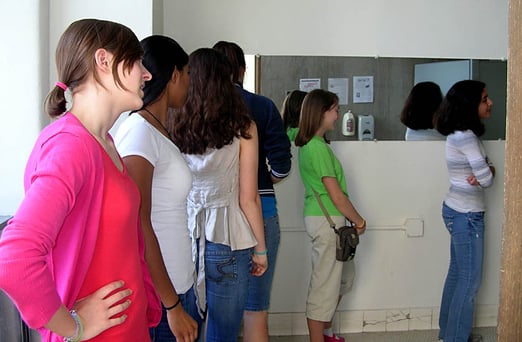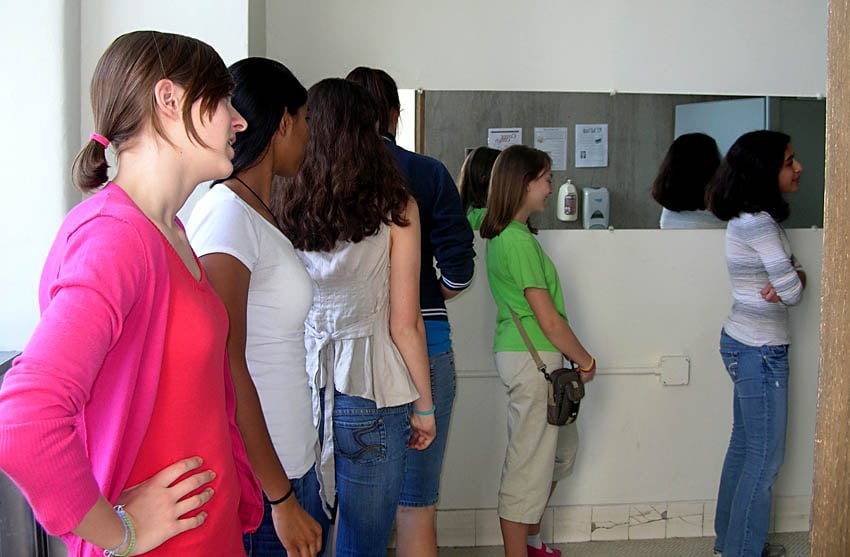
Why Are Women's Restroom Lines So Long?
There are a number of causes for the long lines at women's restrooms. Anatomical differences between men and women can result in increased frequency for women to visit the restroom. Sometimes women are bringing children with them and these additional restroom users mean additional wait times. Consideration should also be given to the difference in urination for men and women meaning that each stall is occupied for a longer period of time. Worse still, a stall uses up much more space than a urinal, meaning that in a building with equal square footage per restroom, a women's restroom has less facilities than a men's restroom.
Summed up, the problem of long lines at women's restrooms is an interesting illustration of the fact that what seems equal might not be. Women's restrooms need more space than men's restrooms to provide the same results for their users, meaning that an equal allocation of space can result in serious problems for women. Fortunately, this is a correctable problem and architects are showing more and more consideration for differing needs in facility designs. Unfortunately, there are plenty of buildings in which it seems probable that long lines at the women's restroom will remain a serious problem for the foreseeable future.
Why Is This Such a Huge Problem?
First and foremost, long lines at the women's restroom are problematic because no one likes being forced to wait in line. People using public restrooms often have a pressing need to use a toilet meaning that increased wait-times can result in increased dissatisfaction with the rest of the facility. This frustration can translate into lost revenues and lost worker productivity.
Second, long lines at the women's restroom make the issue of their cleanliness that much more important. After all, no one likes waiting in a restroom, but waiting in an unclean restroom can make the whole experience that much worse. As a result, facility managers need to make sure that their restrooms are getting the thorough cleaning that they need, which can at least minimize the damage done by long wait-times. On a related note, it should be mentioned that washrooms are also a place where infectious disease can spread with relative ease. This means that facility managers have even more incentive to keep their restrooms as clean as possible to prevent the spread of such diseases, which can have devastating results for the productivity of the business as a whole.
There are a number of proposed solutions to the problem of long lines for women's restrooms. For example, some people have suggested the use of unisex bathrooms, which would reduce wait-times while also side-stepping the potential issue of PR problems when buildings start allocating more space to women's restrooms. Unfortunately, this particular solution comes with some PR problems of its own, meaning that its implementation is neither as simple nor as straightforward as it seems. While long-term solutions such as this one might not be implementable by facility managers, there is still a great deal that can be done to make waiting as bearable as possible for female guests, customers, and employees. Even a small difference in experience can add up in the big picture. For more helpful tips visit our Ultimate Cleaning Guide Below!




Enjoy this blog? Leave a comment or ask a question!